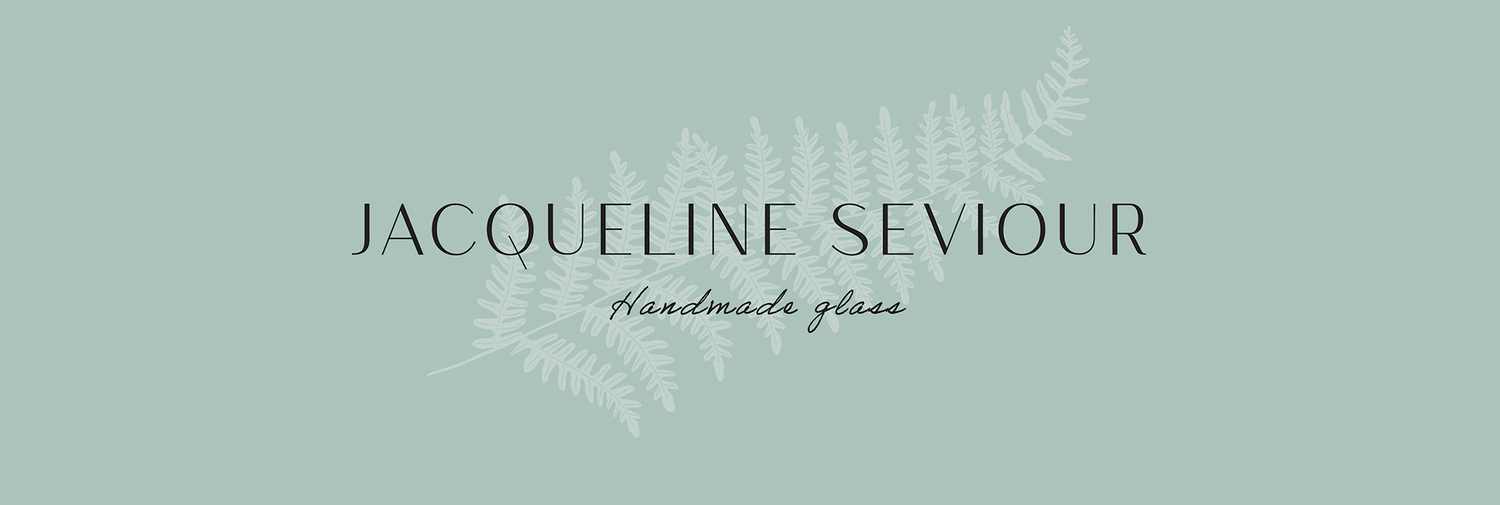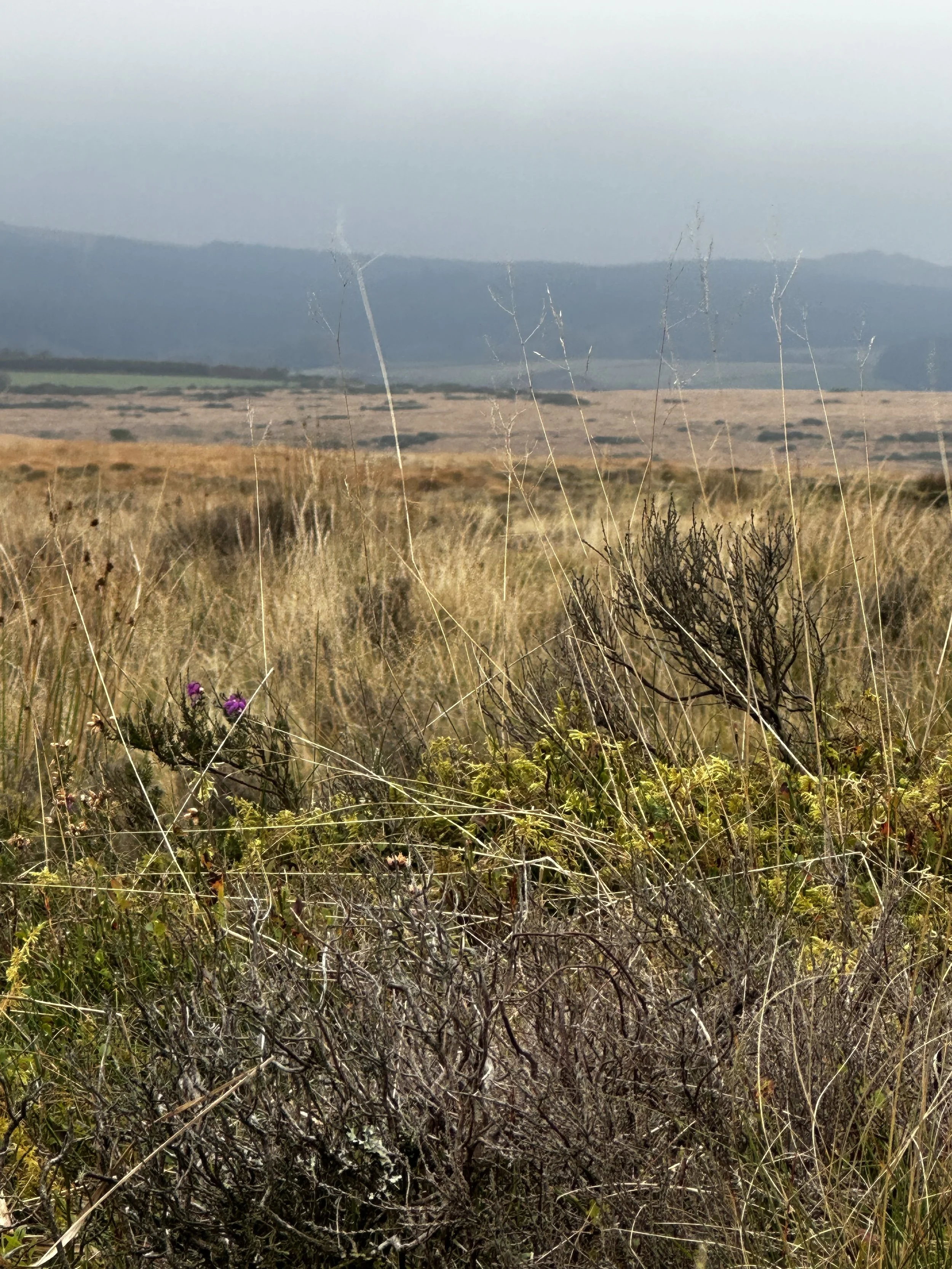Dartmoor Sketching: A Small Act of Bravery
Mood: Quietly Brave | Post Type: Work Spotlight | Weeks Until Show: 41
Seeing Beyond the Lens
I’ve been saying for some time now that I just need to go out and sketch — probably for a few years, if I’m honest. Lately, I find myself noticing so much more about my surroundings than I ever used to. My inner monologue is a constant creative conversation, and when I’m outside, surrounded by landscapes brimming with potential for glasswork, I’m always reaching for my camera. The danger, though, is that those images end up lost in a sea of twenty thousand photographs. And while a photograph can record a scene, it can never quite capture the depth, the subtle shifts of light, or the feelings stirred by standing there in that moment.
A Bench, a Tor, and a Beginning
The catalyst came during our walk back from Bowerman’s Nose. Along the path, there was a small opening that perfectly framed Hound Tor’s silhouette in the soft afternoon light. A narrow wooden bench sat there, and I remember saying, “This would be the perfect spot to sketch.”
And, as if the universe was listening, the very next day a fellow creative I follow on Instagram posted a photo — sitting in that exact same place, sketchbook in hand. That small coincidence felt like a gentle nudge, the push I needed. Still, when trying something new, it’s always comforting to have a bit of moral support.
Finding Support in Shared Beginnings
And moral support often comes from those who are at a similar stage — in both enthusiasm and skill. Our WhatsApp chat that week was full of hilarity and self-deprecation about our artistic abilities. Comparisons to five-year-olds’ drawings featured heavily, along with jokes about paint-by-numbers, colouring books, and even a nostalgic mention of those old “magic” water-reveal books from childhood.
There was plenty of discussion about which medium to use, too. I jokingly reminded Em that my car was small, so she couldn’t bring her large easel and three-foot canvas. But the joke was on me — after a long work week, I had zero decision-making capacity left. So I just threw a whole mix of materials into a bag — pencils, pens, coloured pencils, soluble wax pastels, watercolour brush pens, acrylic inks and gouache paints — and decided I’d figure out what to actually take in my rucksack when we arrived.
The Five-Year-Old Sketch Club
I picked Em up at 9 a.m. and we headed for higher ground. Our first destination was quickly scuppered — taken over by a film crew shooting for the Harry Potter series — so we carried on, the moors growing mistier as we climbed. Eventually, we spotted a view we liked, and conveniently, a small parking area opposite.
The view was stunning, if a little overwhelming in its scale. We found a spot to perch, and Em, ever the textile artist, kindly brought along two beautiful sheepskin seat pads she’d made herself. Em set to work with her coloured pencils, while I chose fine-line pens and my trusty soluble wax pastels on an A4 sketchbook sheet.
As our sketches began to take shape, that familiar voice of self-doubt crept in — the one that whispers a five-year-old could have done better. After ten minutes of quiet concentration, Em broke the silence with a laugh: “Do you want to see my five-year-old drawing?” We both burst out laughing, realising that, in truth, it didn’t matter how “good” our sketches were. What mattered was that we’d shown up, put pen (and pastel) to paper, and given it a go. After all, as the saying goes, masters have failed more times than we’ve even tried.
A New Way of Seeing
I turned the page and decided to try a different medium — coloured pencils. Unfortunately, my set is a very cheap and doesn’t really add colour, just a faint tint. There’s practically zero pigment! (perhaps an idea for my Christmas list.) Still, the experiment served its purpose — it confirmed how much I enjoy working with my fine-line pens and soluble wax crayons.
As I rummaged through my bag, I came across a small viewfinder — a little template I use for marking out my glass pendants. I held it up to the landscape and boom — there it was! A scene that suddenly felt less vast and overwhelming, framed just like one of my glass pieces.
Using the template, I drew a few small boxes on the page and began sketching miniature thumbnails. They actually looked good — and for the first time, my colour choices became bolder. My trees turned blue, and I realised I was making creative decisions rather than trying (and failing) to simply replicate the landscape. I felt completely content — like I’d found a way forward. For the first time, I could see the landscape not just as it was, but as I see it in glass.
A Cold but Creative Success
After about an hour, we’d lost the feeling in our fingers and toes, and the mist had turned to rain. It felt like the right moment to call time on our first — and hopefully the first of many — sketching sessions. We climbed back into the car and immediately switched on the heated seats, trying to coax some warmth back into our cores.
As we descended into the valley, the air grew brighter and noticeably warmer — it always amazes me how it can be five degrees colder just a few hundred feet higher on the moor. We agreed that our sketching session had been a success. That evening, still inspired, I found myself sketching again — this time exploring the layers and forms to see if I could translate one of my first Dartmoor sketches into a larger glass piece.
A video of our time sketching on the moors.
This is Episode 9 in my ‘Solo Show Diary’ series — a behind-the-scenes look at how my work develops. You can find my earlier posts here.



